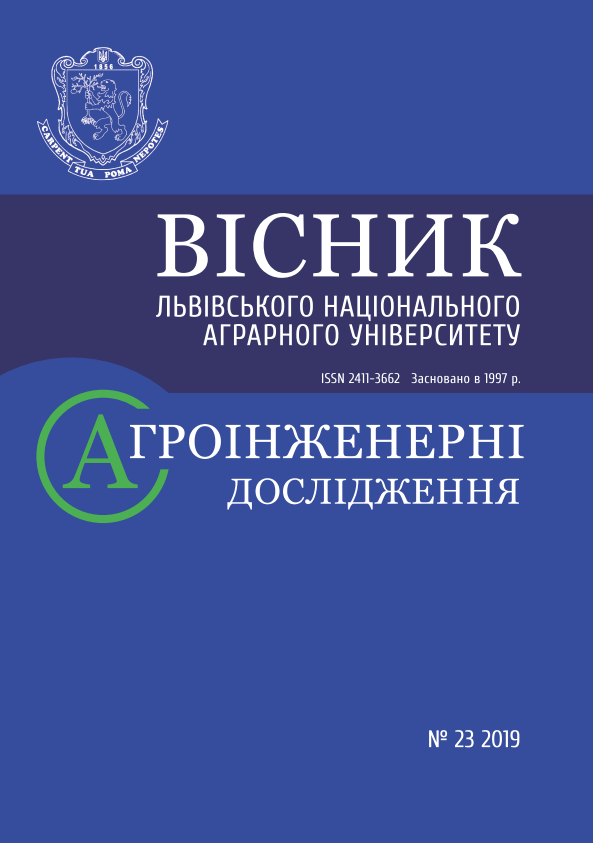POWER SUPPLY SOURCES FOR AUTONOMOUS ELECTRIC VEHICLES AND THE EFFECTIVENESS OF THEIR APPLICATION
DOI:
https://doi.org/10.31734/agroengineering2019.23.106Keywords:
electric vehicle, electric bus, trolleybus, duo bus, gyro, battery, ionistor, fuel cellAbstract
Autonomous Electric Vehicles (AEVs), which have been wholly or partially independent of catenary grids, have recently become increasingly widespread in developed countries. This is due to the effort to reduce emissions of carbon dioxide and other toxic substances, produced by internal combustion engines (ICEs) of road transport. AEVs require much less cost to build and maintain infrastructure (contact and cable networks, traction substations) than traditional contact electric vehicles.
In the cities with developed traditional electric vehicles networks, it is advisable to use AEVs to service destinations, where there are no large passenger flows that would pay for the construction of contact and cable networks (CCNs) and traction substations (TSs), or there are obstacles for the establishment of traditional electric vehicle infrastructure.
AEV power supplies are located directly on the vehicle. These are traction batteries (TBs), supercapacitor (ionistor) batteries and fuel cells for direct conversion of chemical reaction energy into electric current together with a buffer battery. Partially autonomous electric vehicles (duo buses) can use power installations, run on gasoline or diesel engine, and an electric generator to power the traction electric motor (TEM). A separate group of autonomous vehicles are gyros, i.e. vehicles that use mechanical energy accumulators (flywheels).
In the case of electric buses powered by TBs or supercapacitor batteries, the AEVs require creating of the infrastructure, i.e. charging stations that can be housed in depots for static (night) charging, and at final stops of routes – charging stations for fast (dynamic) charging. Autonomous trolleybuses charge the TBs from the catenary grid.
Fuel cell driven vehicles require special stations to fill with compressed or liquefied hydrogen.
The article reviews and analyzes the main technical and design solutions for autonomous electric vehicle installations, which are implemented on serial and experimental models of AEVs, operated in Ukraine and abroad, as well as the experience of building Peugeot J9 Karsan minibus. The work supplies analysis of each type of AEV power sources, and considers the prospects of their further use, as well as determines the appropriate limits of exploitation.
References
Bogdan, N. V., Atamanov, Yu. E., & Safonov, A. I. (1999). Trolleybus. Teoriya, konstruirovanie, raschet. Minsk: Uradzhay.
Bogdan, N. V., Nikolaev, V. P., & Safonov, A. I. (1999). Perspektivnye napravleniia razvitiia gorodskogo nerelsovogo transporta. Minsk: Uradzhay.
Budivnytstvo troleibusnoi linii vid rozvorotnoho kola “Heroiiv Pratsi” do rozvorotnoho kola “Pivnichna Saltivka”. Retrieved from: https://prozorro.gov.ua/tender/UA-2019-04-18-001590-b.
Vykydy zabrudniuiuchykh rechovyn ta dioksydu vuhletsiu u atmosferne povitria (1990–2018 roky). Retrieved from http://kiev.ukrstat.gov.ua/p.php3?c=1730&lang=1.
Vuchik, V. R. (2011). Transport v gorodah, udobnyih dlya zhizni. Moskva: Territoriya buduschego.
DBN B.2.2-12:2018. Planuvannia i zabudova terytorii. [Chynnyi vid 2018-09-01]. Kyiv: DP “Ukrarkhbudinform”. (2018).
DBN V.2.3-18:2007. Sporudy transportu. Tramvaini i troleibusni linii. Zahalni vymohy do proektuvannia. [Chynnyi vid 2008-01-01]. Kyiv: DP “Ukrarkhbudinform”. (2018).
Efremov, I. S. (1969). Trolleybusy: teoriia, konstruktsiia i raschet: ucheb. dlya vuzov po spets. Gorodskoy elektricheskiy transport. Moskva: Vysshaya shkola.
Kedrinskiy, I. A., Yakovlev, V. G. (2013). Li-ionnyie akkumuliatory. Krasnoyarsk: Platina.
Modernizatsiia trolleibusov s zamenoi sistemy upravleniia tiagovym dvigatelem i ustanovkoi dizel-generatora: Prospekt-katalog. (2017). Kiyev: DI Elkom Ukraina.
Nizhnikovskii, E. A. (2015). Sovremennye elektrohimicheskie istochniki toka: Monografiya. Moskva: Radiotehnika.
Ovsiannikov, E. M., Dolbilin, E. V., & Kosheliaev, E. M. (2010). Elektrooborudovanie avtotransportnyh sredstv s tiagovymi elektroprivodami. Moskva: Paleotip.
Pro miskyi elektrychnyi transport: Zakon Ukraiiny. Retrieved from https://zakon.rada.gov.ua/laws/show/1914-15.
Tramvai № 6 ta № 2 vidsohodni yizdiat za novymy marshrutamy – u Vinnytsi vidkryto novozbudovanu koliiu. Retrieved from https://www.vmr.gov.ua/Lists/CityNews/ShowNews.aspx?ID=1709.
Trolleybus gorodskoy YuMZ T2.09. Tehnicheskoe opisanie. (2008). Dnepropetrovsk: YuMZ.
Trolleybus gruzovoy KTG-1. Rukovodstvo po ekspluatatsii, obsluzhivaniiu i remontu. (1978). Kiev: Kievskii zavod elektrotransporta imeni F. Dzerzhinskogo.
U Lvovi vidkryly dlia rukhu novozbudovanu liniiu tramvaia na Sykhiv. Available at: https://city-adm.lviv.ua/news/city/transport/235674-u-lvovi-vidkryly-dlia-rukhu-novozbudovanu-liniiu-tramvaia-na-sykhiv.
Hrustalev, D. A. (2003). Akkumuliatory. Moskva: Izumrud.
Elektrobus modeli E433 “VITOVT MAX ELECTRO”. Retrieved from https://bkm.by/catalog/elektrobus-modeli-e433-vitovt-max-electro/.
Habarda, D. (1986). Nove dopravne systemy v mestkey hromadnej doprave. Bratislava: Vydavatelstvo technickej a ekonomickej literatury «ALFA».
SKODA. Trolley / Battery BUSES: prospekt-katalog. (2018). Plzen: SKODA ELECTRIC a.s.
Solaris: Napedy alternatywne. Katalog produktowy. (2019). Ovinska: Solaris Bus & Coach S.A.
Światowa premiera > Hydrogen. Retrieved from https://www.solarisbus.com/pl/pojazdy/napedy-zeroemisyjne/hydrogen.


